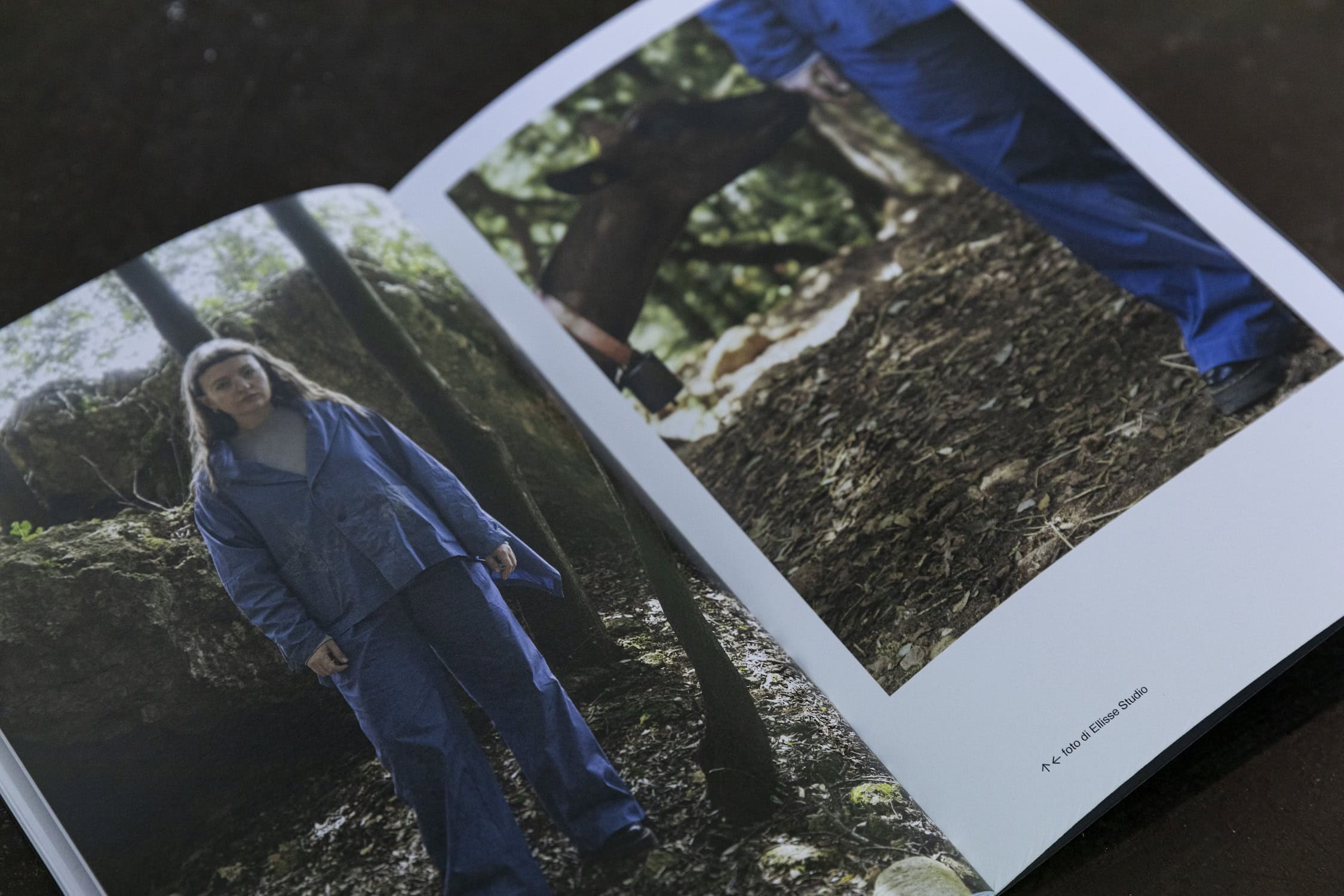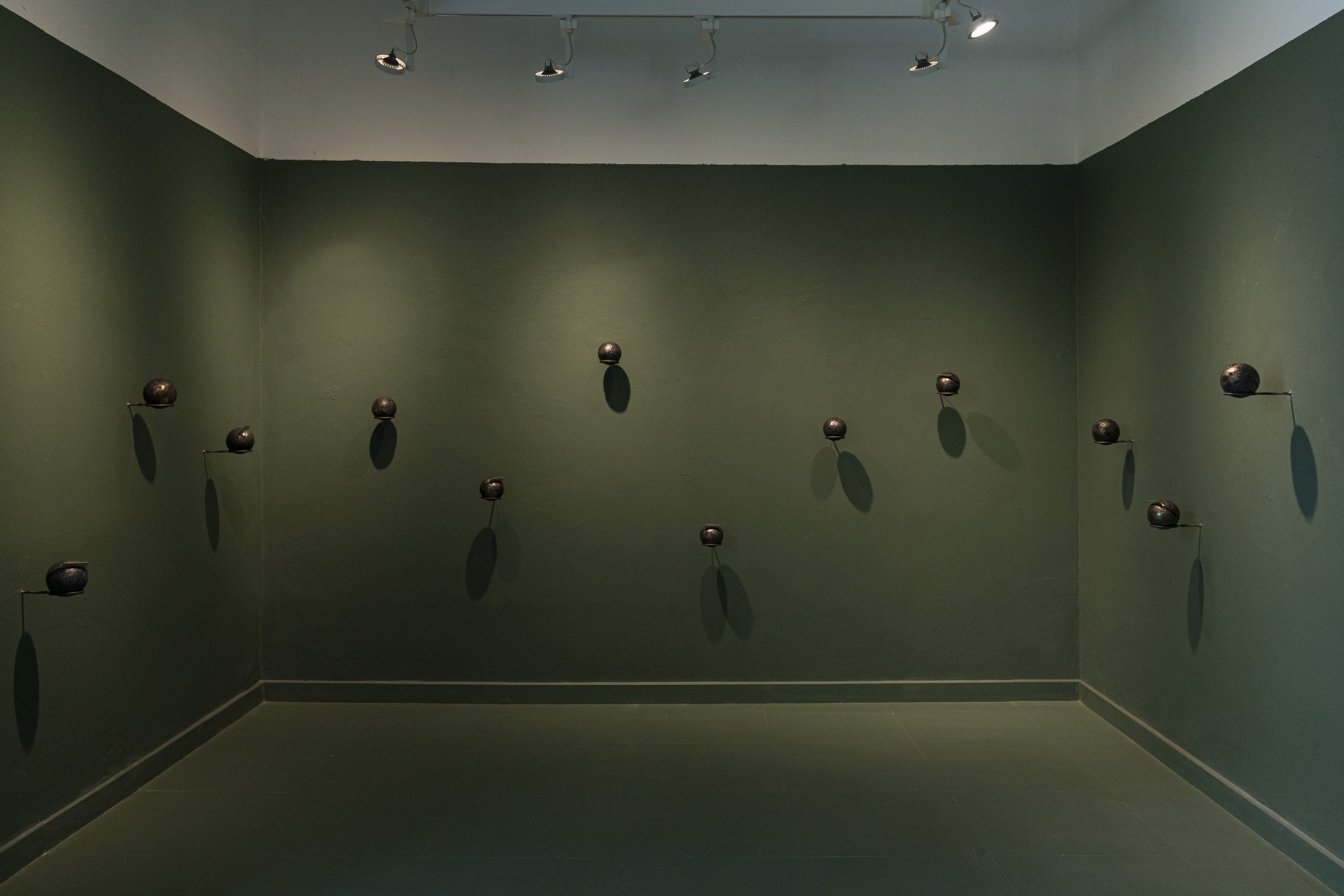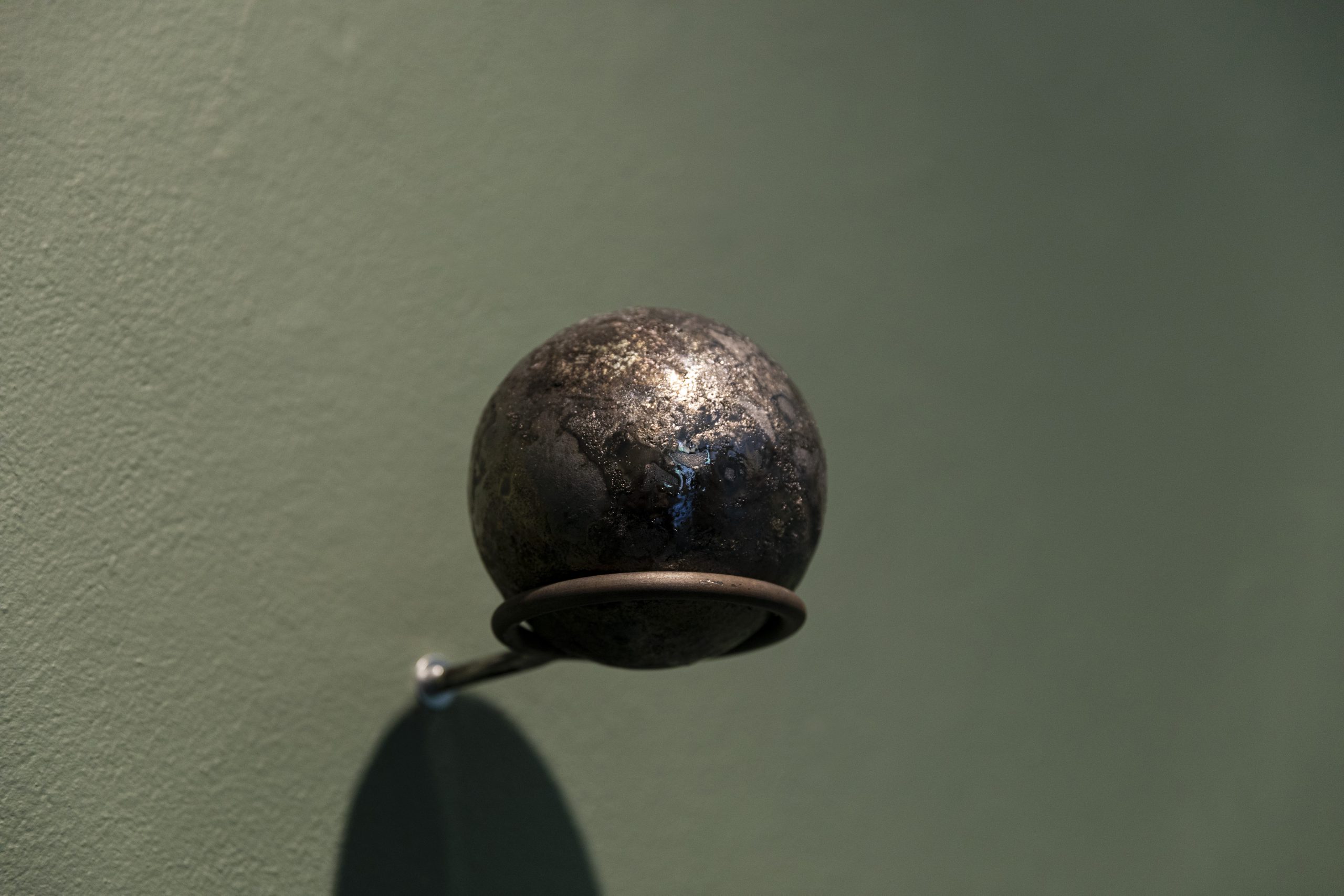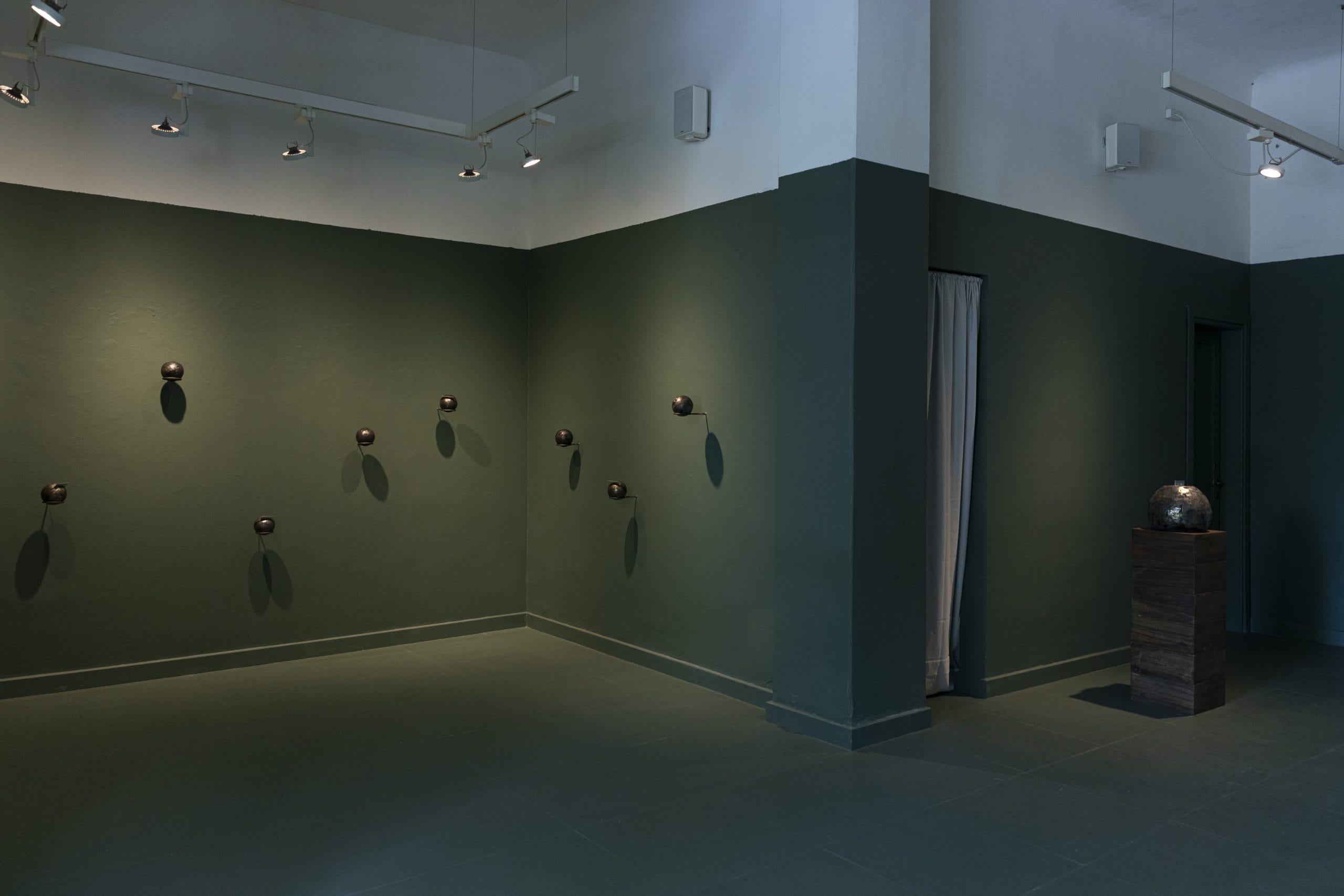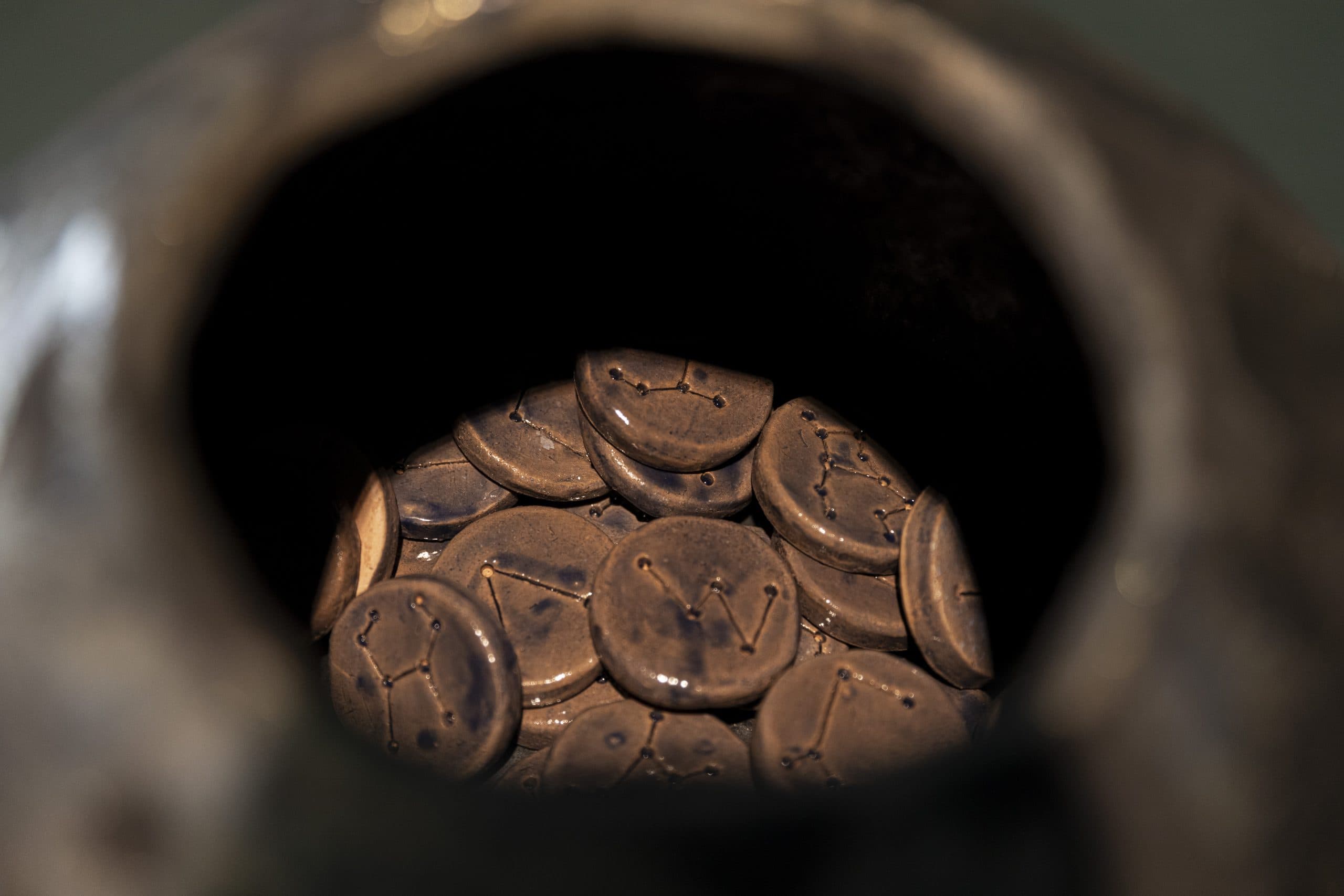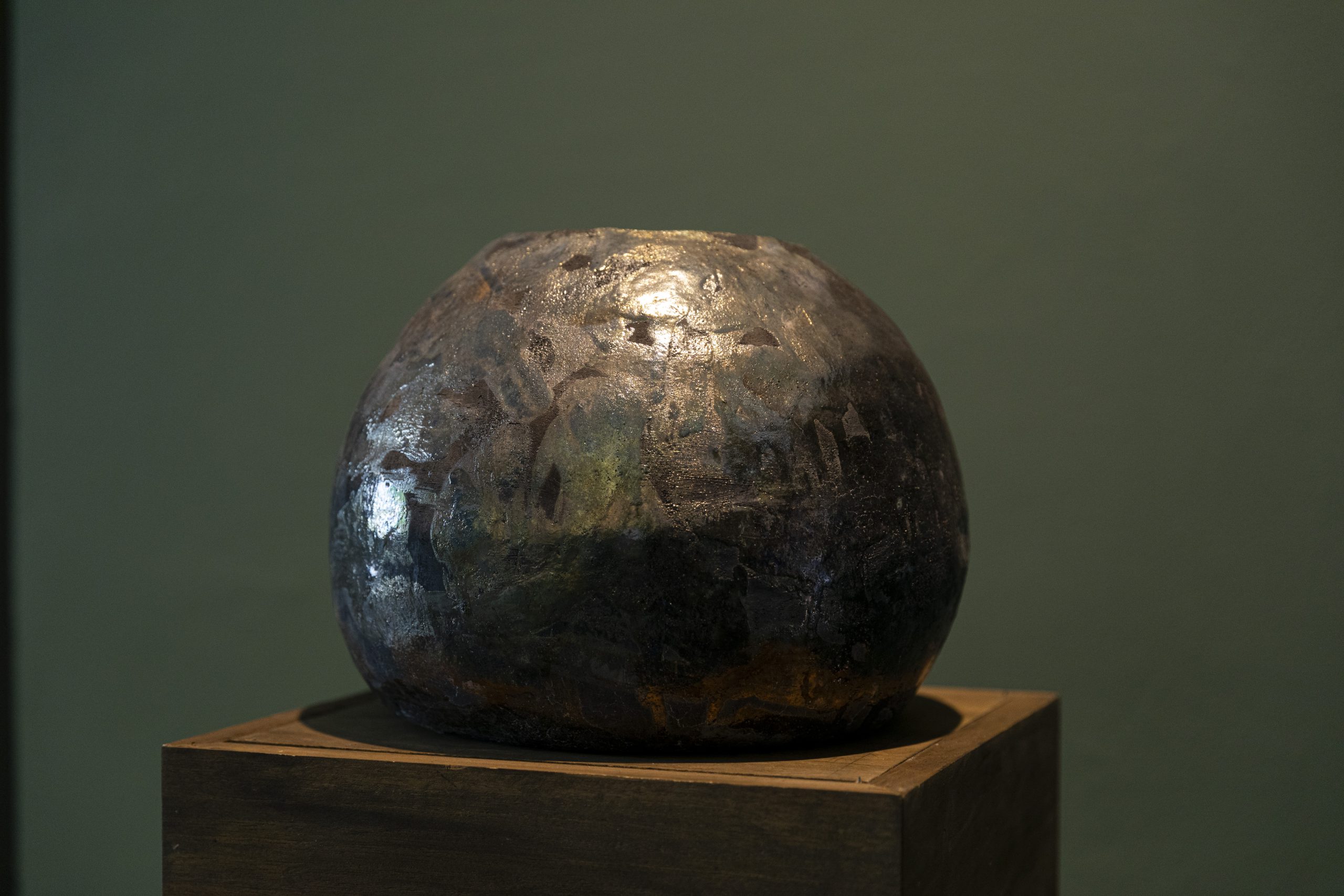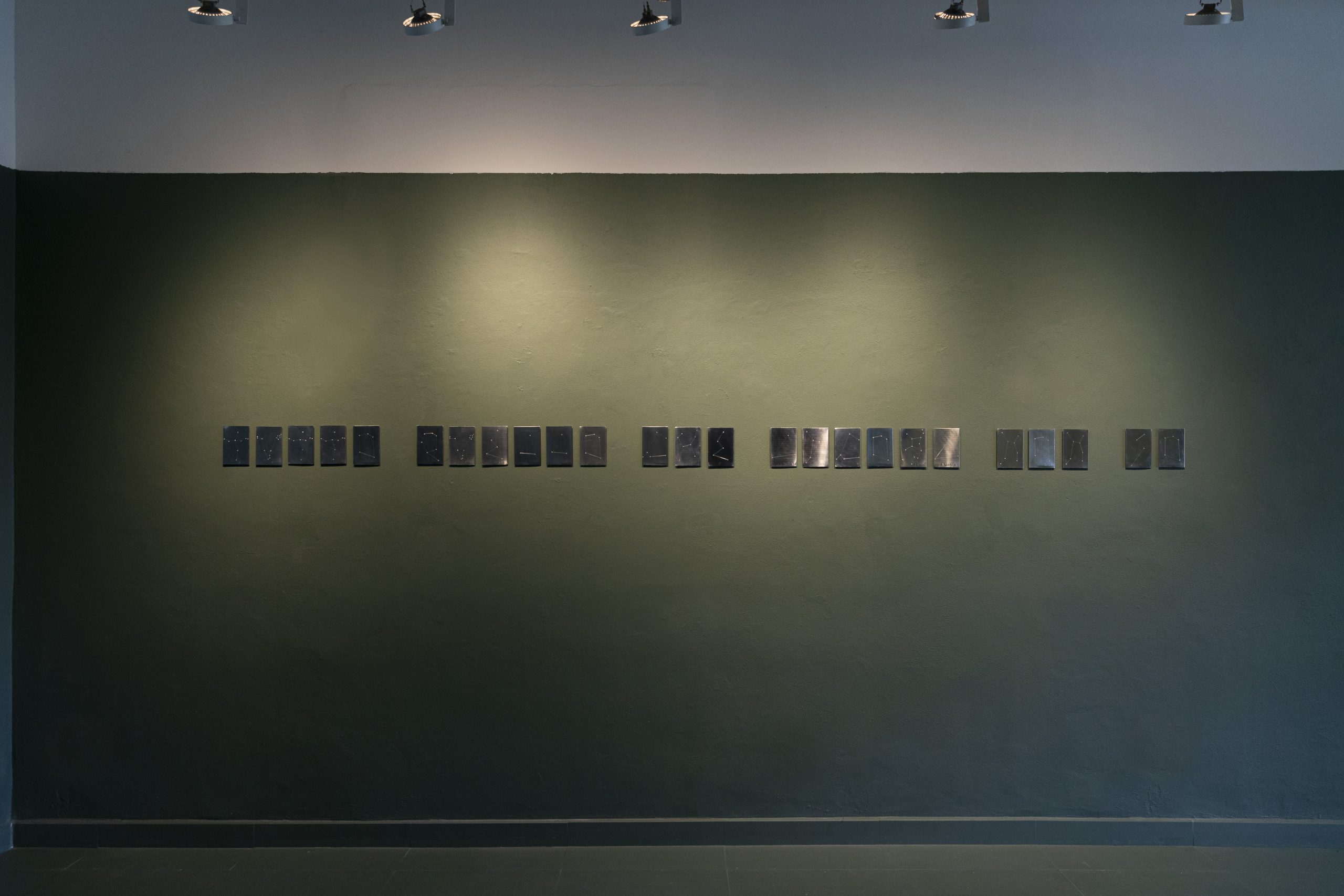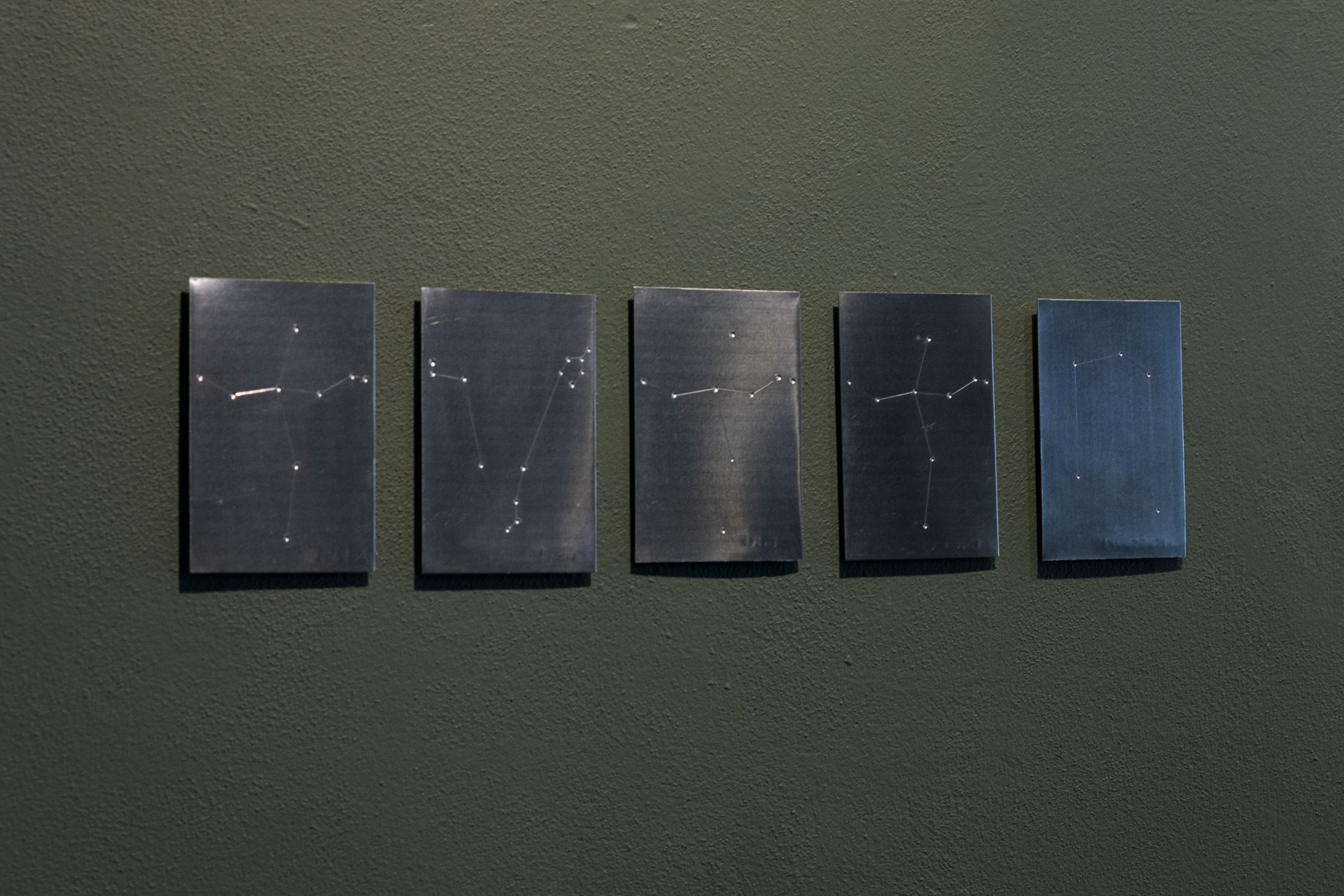I am reminded of a quote by American astronomer Carl Sagan from his book Cosmos: “The nitrogen in our DNA, the calcium in our teeth, the iron in our blood and the carbon in our apple pie,” he said, “come from stardust.” The cosmos is in us, in the matter around us. Every time a star explodes that material is put back into the nebulae, which are also the cradle of new stars. And from those nebulae that “ignite” the stars, we were also born, once the raw material was available.
Ever since human beings have co-inhabited the world we know, they have looked to the stars in the sky. The gaze reaches where the body cannot. The moon, like the stars, is too far away to be touched. Human beings have learned to “consider” by looking at the stars and planets, which have influenced the course of history on both us and nature. Human beings have learned to “desire” in the absence of references in the sky, on dark nights, by looking within. “Desire cancels the enormous distance between us and the stars,” the artist says. Perhaps desire leads us to recognise the star stuff that makes us part of the cosmos.
The exhibition Considera / Desidera–on view at The Lab at LABottega in Marina di Pietrasanta–presents a series of sculptural works created during Lucrezia Costa’s artist residency at La Stellata, a farm nestled in the hills of Versilia. The slow time of residence immersed in nature and the surrounding territory allowed Costa to investigate the relationship between humans and the night sky, its changes, and the stars, which are not always visible. It is in the moment of absence of the stars, present but absent to the human gaze, that the human being turns to himself. Similarly, the artist allowed herself to be led by the phrase “All that I don’t know yet,” an affirmation and at the same time a research question, which led her, through clay modelling and the action of etching reflective plates, to transpose thoughts into acts and exercises of relating to the uncontrollable in the form of matter.
Ilaria Sponda: How did your research find fertile ground in the Versilian hills and La Stellata?
Lucrezia Costa: The Versilian area–where La Stellata is located–is a paradise of vegetation and biodiversity. Having the opportunity to stay in silence and tranquillity has definitely been a contrast and a cut with my routine. It was sometimes painful and uncomfortable, but necessary to seize my everyday life with major attention and clarity, as from afar. I often find myself looking for situations in which I am uncomfortable emotionally: it is part of my work and I believe that it is in a condition of vulnerability that one can listen and perceive better what is going on around even within themselves. La Stellata represented the perfect place for this process to be nurtured.
IS: How did the residency production develop from the beginning–the desire to explore a certain topic and follow a desire–to the completion of the artworks, thus your own consideration of the resulting work?
LC: As often happens in life unforeseen events and deviations lead to results that are completely different from what we we had set out to achieve. This was precisely the case during this residency: the weather did not allow the mapping of the night sky that I had previously wished to achieve, and thanks to the constant sharing of opinions with Serena and Marco (Founders of LABottega and La Stellata) and the analysis of the location, in mostly emotional terms, I arrived at a much more complex and evolved result than the ideas I had started with. The production shifted from a strictly conceptual dimension to one that would lead me to develop ideas on a physical level, meaning with a certain pragmatism that I seek and that helps me in the pace of realisation.
IS: What were the most important places at La Stellata for your research and the processing of the works in the exhibition?
LC:Definitely one of my favorite places at La Stellata is the goat forest, which by the way are all named after constellations and stars to keep with the theme of my research. Inside this enclosure there is also a cave from the Second World War
World War II where I took refuge a few times to think. I admit that rather than identifying places that were important to me, I’d rather think of people who were fundamental to my personal and artistic growth. To mention a few: Serena, who was very comprehensive and careful, and Marco, who supported me a lot with the production and the conceptualisation of the works. People more than place are to me fundamental and La Stellata is a place where there are many, impactful people.
IS: Do you have a routine in your days of immersion in artwork?
LC: I don’t have a particular routine but if I feel the need to bring an abstract idea out in the real world and make it physical and take shape, my art practice becomes a priority and I have to give it a voice. Generally, I start from a personal need, to which I then connect to theoretical research that gives support to that idea and can involve the audience directly, stimulate reflection and nurture questions. After that, when the theoretical basis is sufficiently firm, I move on to practice and begin to figure out materials, forms and functioning.
IS: Can we talk about a work uniform? Does dressing in a certain way plays a role in a certain way?
LC: Clothing plays an important role in my work.I start from the assumption that I am an artist who likes to get dirty and experiment, consequently a uniform serves me not to ruin all my clothes. In addition, I learned many of my manual skills from my blacksmith grandfather, who always works wearing jeans and a work jacket, and perhaps a little out of emulation and a little out of esteem I often work dressed like him. On the occasion of the residency at La Stellata though, OLDER Studio provided me with one of their uniforms, a very loose and comfortable, like the clothes I usually wear to work. The narrative behind this uniform won me over and I immediately chose it for that: the fabric comes from the pijamas of the now closed Baggio Hospital. The brand’s designers Letizia Caramia and Morten Thuesen repurposed those fabrics through an upcycling project and creating work uniforms out of them.
